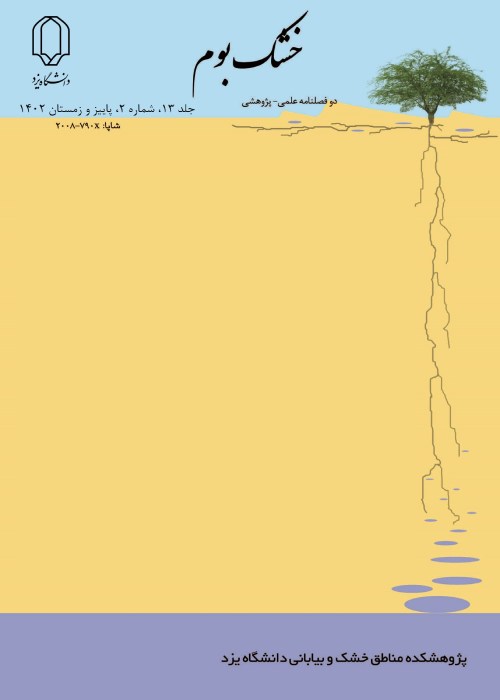The effects of salt stress on some physiological characteristics and dry weight in sorghum (Sorghum bicolor) and kochia (Bassia indica) intercropping
Due to the scarcity of water resources, the use of saline water to cultivate forage halophytes is a practical solution. However, the main problem of forage of halophytes is their low energy content and high salt. In these conditions, mixed consumption and halophytes-crops intercropping can be useful. The current research was carried out in order to evaluate the effect of salinity of irrigation water on growth and some physiological characteristics in different ratios of sorghum-kochia intercropping in the National Salinity Research Center. The treatments included three levels of salt stress: 2, 7 and 14 dS m-1 in the main plots and five planting systems: sole sorghum, ⅔ sorghum (2 parts sorghum, 1 part kochia), ½ sorghum (1 part sorghum, 1 part kochia), ⅓ sorghum (1 part sorghum, 1 parts kochia) and sole kochia in the sub plots arranging in a split plot experiment based on randomized block design. Results showed that salinity, depended on the severity, significantly changed growth and physiological characteristics in both sorghum and kochia. Salinity at 14 dS m-1 was associated with reduction in dry weight (62%) and K+ concentration (22%) and increasing Na+ concentration (427%), Cl- concentration (175%) and activity of catalase (88%), peroxidase (77%), superoxide dismutase (86%) and ascorbic peroxidase (154%) in sorghum. These increasing and decreasing were less in kochia (23%, 22%, 37%, 105%, 237%, 77%, 406% and 294%, respectively); which indicated higher salinity tolerance of kochia. The optimum intercropping system for sorghum was ⅔ sorghum and were ½ and ⅓ sorghum for kochia; which reflected more sensitivity of sorghum to intra species completion in intercropping systems than kochia. According to the different reactions of two plants to salt stress, sorghum tolerated the salt stress probably via induced antioxidant system in order to ameliorate oxidative stress and kochia tolerated the salinity probably through ionic distributions in tissues via reduced transport to shoots and/or ions compartmentation in organelles. It seems that proper kochia density (⅓) enhanced salinity tolerance of sorghum, therefore, it is recommendable for saline conditions.
- حق عضویت دریافتی صرف حمایت از نشریات عضو و نگهداری، تکمیل و توسعه مگیران میشود.
- پرداخت حق اشتراک و دانلود مقالات اجازه بازنشر آن در سایر رسانههای چاپی و دیجیتال را به کاربر نمیدهد.





